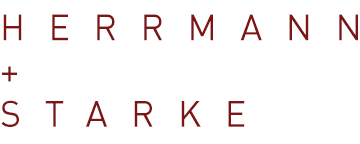EXERCISES
THE DECISION MATRIX
A Decision Matrix helps you evaluate different criteria that influence a decision. A perfect example of when you’d want to use a decision matrix can be found in step 4 of our Values Analysis exercise.
Decision Matrices can be used to simplify very complicated decisions – you can include weighting or ranking factors, nest criteria groups together, or prioritize factors against criteria. But, that’s for someone else’s blog to cover. In their simplest form they help you weigh criteria against each other quickly and easily. Here’s how they work:
Make a table or grid that has as many columns and rows as the criteria you’re evaluating plus 1. In other words, if you’ve got 5 criteria, you’ll need a table that’s 6 columns by 6 rows. Leaving the top cell of the first column, enter your criteria in the same order across the top and down the first column:
Complete the grid by comparing each criteria against the other and entering the winning criteria in the intersecting cell. In other words, ask yourself “If I had to chose between Criteria 1 and Criteria 2, which would I pick?” Then enter the winner as shown below. You’ll only use half of the table – no need to compare a criteria against itself and column 2 vs row 3 is the same as column 3 vs row 2:
Count how many times each criteria appears in your table. If there’s a tie, note which one beat the other when you compared them side-by-side. In this example, Criterias 2 and 5 appear three times each, 1 appears twice and 3 & 4 each appear once. Criteria 2 beat 5 and 3 beat 4. Interestingly, the one and only time that 4 appears, it beat 2 so that tells us we need to look a little more closely at what’s going on there.
Like all tools, a decision matrix is not a silver bullet but this simple framework really can help you make better decisions.
© HERRMANN + STARKE, 2010-2025. THIS WORK IS LICENSED UNDER A CREATIVE COMMONS ATTRIBUTION-NONCOMMERCIAL-NODERIVS 4.0 LICENSE.
SIMPLY PUT, YOU MAY SHARE THIS INFORMATION BUT YOU MAY NOT SELL IT OR MODIFY IT. YOU MUST ALSO DISTRIBUTE OUR COPYRIGHT NOTICE ABOVE WITH THE MATERIALS AND CITE 2GOODTHINGS.COM AS THE SOURCE OF THE INFORMATION. WE APPRECIATE YOUR UNDERSTANDING OF THE EFFORT REQUIRED TO PRODUCE THIS INTELLECTUAL PROPERTY AND OUR NEED TO PROTECT IT.




